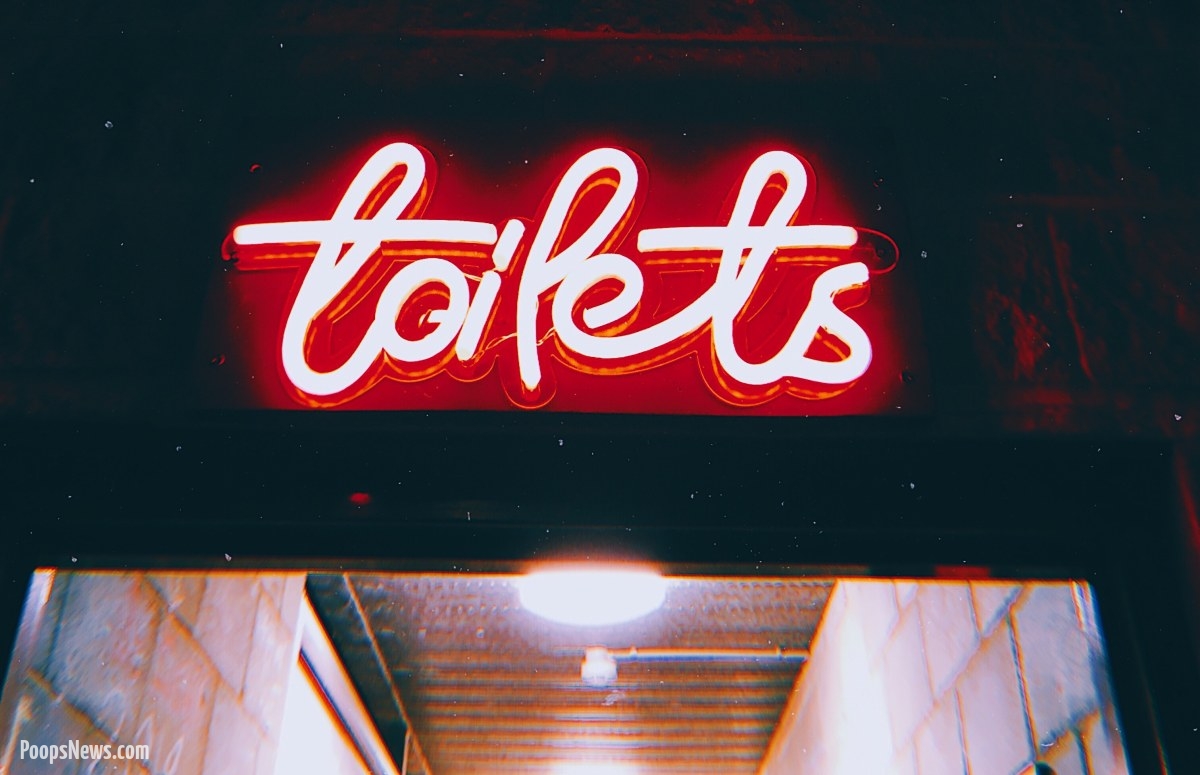Public restrooms are not just places where nature’s call is answered. No, they are secret galleries of human expression, a wild art exhibition where the most profound thoughts of our time are plastered in Sharpie on grimy tiles. It is here, amid the scent of disinfectant and the echo of automatic flushes, that the human mind reveals its deepest, most bizarre reflections. If you’ve ever dared to glance at the walls of a public restroom, you may have asked yourself: “Why do people write the strangest things here?” Hold onto your toilet seat, because the answer is as convoluted as a roll of two-ply stuck to a public restroom floor.
The Throne of Wisdom
Public restrooms have long been associated with reflection. For centuries, humans have regarded their bathroom time as a moment of pause, a rare escape from the endless torrent of life. Historically, great minds have admitted to their best ideas striking them during these moments of profound solitude. From philosophers to engineers, countless individuals have found clarity while sitting on what many now refer to as “the thinking throne”.
What makes a public restroom so special, however, is not the solitude but the collective consciousness that pervades it. Unlike the privacy of one’s home bathroom, public restrooms are shared spaces — an arena where one can contemplate life’s great mysteries in the company of strangers. It is precisely this communal atmosphere, coupled with the low hum of bathroom fans, that stimulates the need to share life-altering insights such as “Jeremy was here” or “For a good time, call…”
These walls are not simply scrawled with nonsense; they are modern hieroglyphs waiting to be decoded. Scholars have yet to crack the exact meaning of “YOLO” followed by a crude drawing of an aardvark, but one can assume it holds the same gravitas as the Rosetta Stone.
Graffiti or Modern Poetry?
Art critics, take a back seat. Public restroom walls have become the unofficial canvas for poets, philosophers, and disillusioned philosophers who moonlight as part-time janitors. It’s an undeniable fact: when people step into a public restroom, their inner poet awakens. The combination of stress, bodily urgency, and the stale scent of air freshener activates a creative spark within them. Suddenly, the average Joe finds himself in a battle with existential questions such as “Is love really like a fart — if you force it, it’s probably crap?”
Where else can you find such pure, unfiltered thoughts? Not in classrooms. Not in boardrooms. No, these nuggets of wisdom are saved exclusively for the hallowed stalls of public restrooms. It’s as if the walls themselves beckon to be written on. “Don’t leave me bare”, they cry, “Share with the world your innermost nonsense”.
In a way, it’s democratic. Anyone with a pen — or in more creative cases, a broken eyeliner pencil — can leave their mark on history. And unlike traditional poetry, where some pretentious critic determines its value, restroom poetry is immediately judged by the people, for the people. If your work is truly inspiring, it might be accompanied by responses from strangers like “Same” or “Facts”.
The Mystery of the Sharpie
How does one explain the sheer volume of Sharpie-based writings in public restrooms? Are Sharpies simply more popular among restroom enthusiasts? Or is there a hidden cult that distributes Sharpies to dedicated restroom scribblers worldwide?
While there’s no definitive answer, it’s widely believed that the public restroom Sharpie is not your average writing utensil. It’s an enchanted tool that, once in hand, possesses the writer to produce such masterpieces as “To pee, or not to pee?” followed by what can only be described as an interpretive drawing of a flamingo.
It’s also worth noting the permanence of the Sharpie. The author knows full well that their words will linger long after they’ve left the restroom, possibly surviving multiple generations of urinal users. This ensures that their message — whether it’s a declaration of unrequited love or a baffling equation involving pineapples and conspiracy theories — becomes part of the restroom’s legacy. Public restroom walls are the Sistine Chapel of modern graffiti, and the Sharpie is the Michelangelo behind it.
Conversations Across Time
In an ironic twist, public restroom walls have become the original social media platform. Long before Twitter was invented, humans were already sharing their unsolicited opinions in public restrooms. “Why send a tweet when you can write on a wall and reach an audience of desperate people with nowhere else to look?” one might ask.
These restroom conversations often transcend time and space. A simple statement like “Greg is an idiot” could spark debates that rage on for years. Imagine a weary traveler in 2027 discovering this same scrawled declaration. Greg may have moved on with his life, possibly unaware that he’s still a hot topic of restroom discourse, yet his legacy lives on.
And it’s not just insults that get passed down through generations. Love declarations (“Becky + Tim 4ever”) may serve as powerful historical documents for future anthropologists. When they study our society, these inscriptions will be seen as artifacts, relics of a time when love was declared in a most sacred place — next to a broken soap dispenser in a gas station bathroom.
Public Restroom Conspiracies
Among the traditional restroom graffiti lies another genre: the conspiracy theorists. Just as the internet has its fair share of tinfoil hat enthusiasts, so do public restrooms. Perhaps you’ve come across claims that “Birds aren’t real” or instructions on how to decode the lyrics to “Bohemian Rhapsody” as a map to hidden treasure.
Public restrooms are breeding grounds for wild theories. Why? Simple. When you’re alone in a public restroom, with only the sound of distant footsteps and the occasional hand dryer to accompany your thoughts, your mind is free to wander. Did the government install cameras in the toilet paper holders? Is the janitor secretly a lizard person? These thoughts naturally follow when you’re inhaling a potent mix of cleaning chemicals and human desperation.
The next time you find a note that reads, “The end is nigh, but first wash your hands”, don’t dismiss it outright. It’s possible that public restrooms are the headquarters for a shadowy underground network of truth-seekers using graffiti to communicate their findings.
Artistic Evolution
While many of us imagine Renaissance paintings when we think of art, there’s no denying that restroom wall doodles represent a new frontier in creative expression. Much like cavemen used walls to depict their hunting stories, today’s public restroom artists use Sharpies to draw stick figures engaged in far more baffling activities.
There’s a clear evolution happening in restroom art. At first, the drawings might appear crude and simplistic — a simple “Bob was here” paired with an equally simple drawing of Bob’s face. But over time, these drawings become more sophisticated. Soon, Bob has been given shading, depth, and possibly a crown, declaring him the “King of Toilets”. Suddenly, the restroom transforms from a mere pit stop into an immersive art gallery.
The Last Sanctuary for Free Speech
In an age of censorship, political correctness, and oversaturated digital platforms, the public restroom wall stands as one of the last remaining bastions of unfiltered speech. You can’t be de-platformed from a restroom. No one is fact-checking the claim that “Time is a flat circle” or that “Stanley the Ghost Haunts This Stall”.
Restroom walls give the voiceless a voice. These scrawled notes and doodles are messages from the underground, from the people too afraid to tweet their thoughts or too disillusioned to engage in polite society. Here, they can speak freely and be heard by anyone who happens to be waiting for their turn at the hand dryer.
Public restrooms are strange, magical places where the human spirit thrives in its most bizarre, absurd, and often toilet-related form. They’re not just functional facilities; they are forums for thought, expression, and debate. So, the next time you find yourself in a public restroom, take a moment to admire the walls. You’re not just reading gibberish; you’re engaging with the collective consciousness of humanity, one Sharpie stroke at a time.





